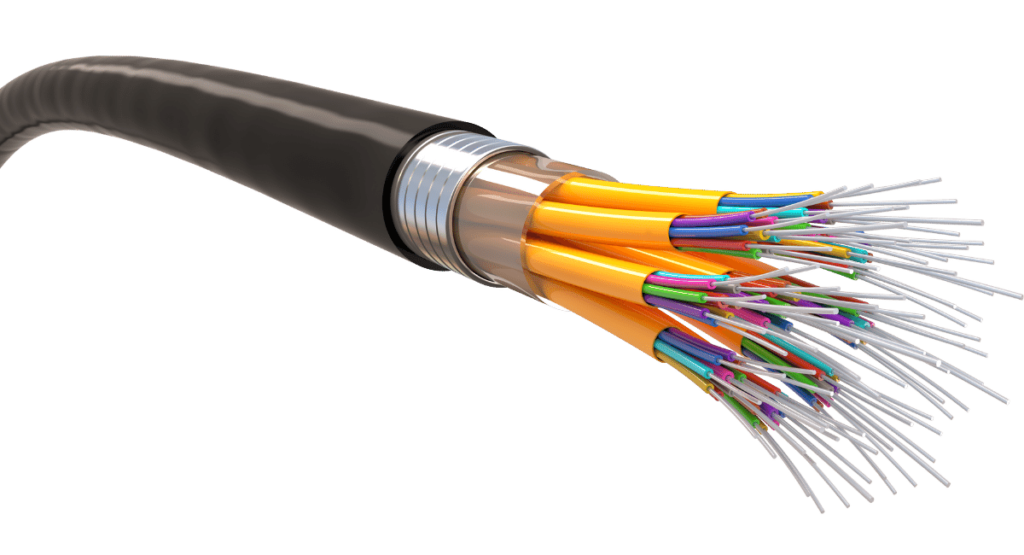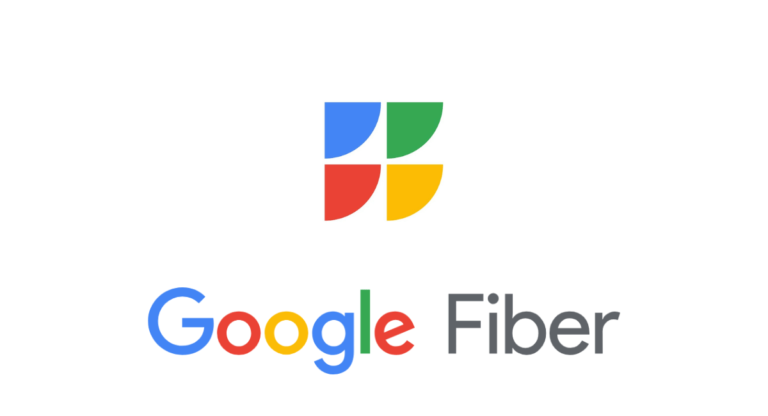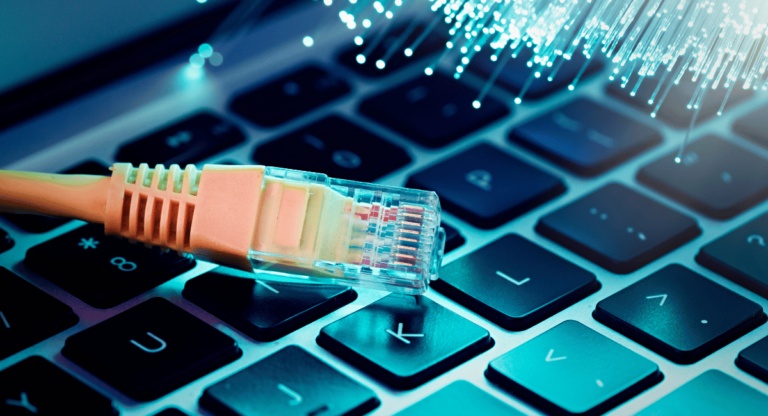What Is Fiber Optic HDMI Cable? – [In Brief]
Unlike traditional HDMI cables that use copper wires to transmit signals, fiber optic HDMI cables use optical fibers.
A fiber optic HDMI cable is an HDMI cable that uses strands of fine glass filament to transfer data as light pulses. This makes it ideal for long-distance transmission of high-definition video and audio signals.
Fiber optic cables are immune to electromagnetic interference (EMI), which can degrade the signal quality of copper-based HDMI cables. They are also thinner and lighter than copper cables, making them easier to install and conceal.

Benefits of Using Fiber Optic HDMI Cable
Here are some of the benefits of using a fiber optic HDMI cable:
- Longer transmission distances: Fiber optic cables can transmit signals over much longer distances than copper cables without losing signal quality. This makes them ideal for connecting devices that are located far apart, such as a Blu-ray player in the living room to a TV in the bedroom.
- Higher bandwidth: Fiber optic cables can support higher bandwidth than copper cables, which means that they can transmit high-definition video and audio signals without compression. This is important for applications that require the highest possible image quality, such as gaming and home theater viewing.
- Immune to EMI: Fiber optic cables are immune to electromagnetic interference, which can degrade the signal quality of copper cables. This makes them a good choice for applications that are located in areas with high levels of EMI, such as near power lines or in industrial settings.
- Thinner and lighter: Fiber optic cables are thinner and lighter than copper cables, making them easier to install and conceal. This is especially important for applications where the cable needs to be run through walls or ceilings.
Drawbacks of Using Fiber Optic HDMI Cable
However, there are also some drawbacks to using a fiber optic HDMI cable:
- More expensive: Fiber optic HDMI cables are typically more expensive than copper cables.
- Not as widely available: Fiber optic HDMI cables are not as widely available as copper cables.
- Requires converters: Fiber optic HDMI cables require converters at each end of the cable to convert the data from light to electrical signals and vice versa. This can add to the cost of the cable and can also introduce some latency.
Conclusion
Overall, fiber optic HDMI cables provide a reliable and high-quality solution for long-distance, high-bandwidth audio and video transmission.
Whether or not a fiber optic HDMI cable is the right choice for you depends on your specific needs and budget.
![What Is Fiber Optic Internet? – [In Brief]](https://radouane.me/hub/wp-content/uploads/2023/07/Fiber-Optics-Internet-768x416.png)
![What Is HDMI Cable? – [In Brief]](https://radouane.me/hub/wp-content/uploads/2023/07/What-is-HDMI-Cable-768x416.png)
![What Is Fiber Optic Cables? – [In Brief]](https://radouane.me/hub/wp-content/uploads/2023/07/Untitled-design-10-768x416.png)


2 Comments